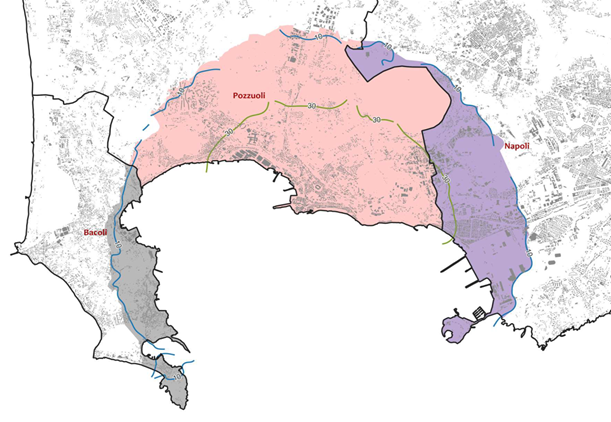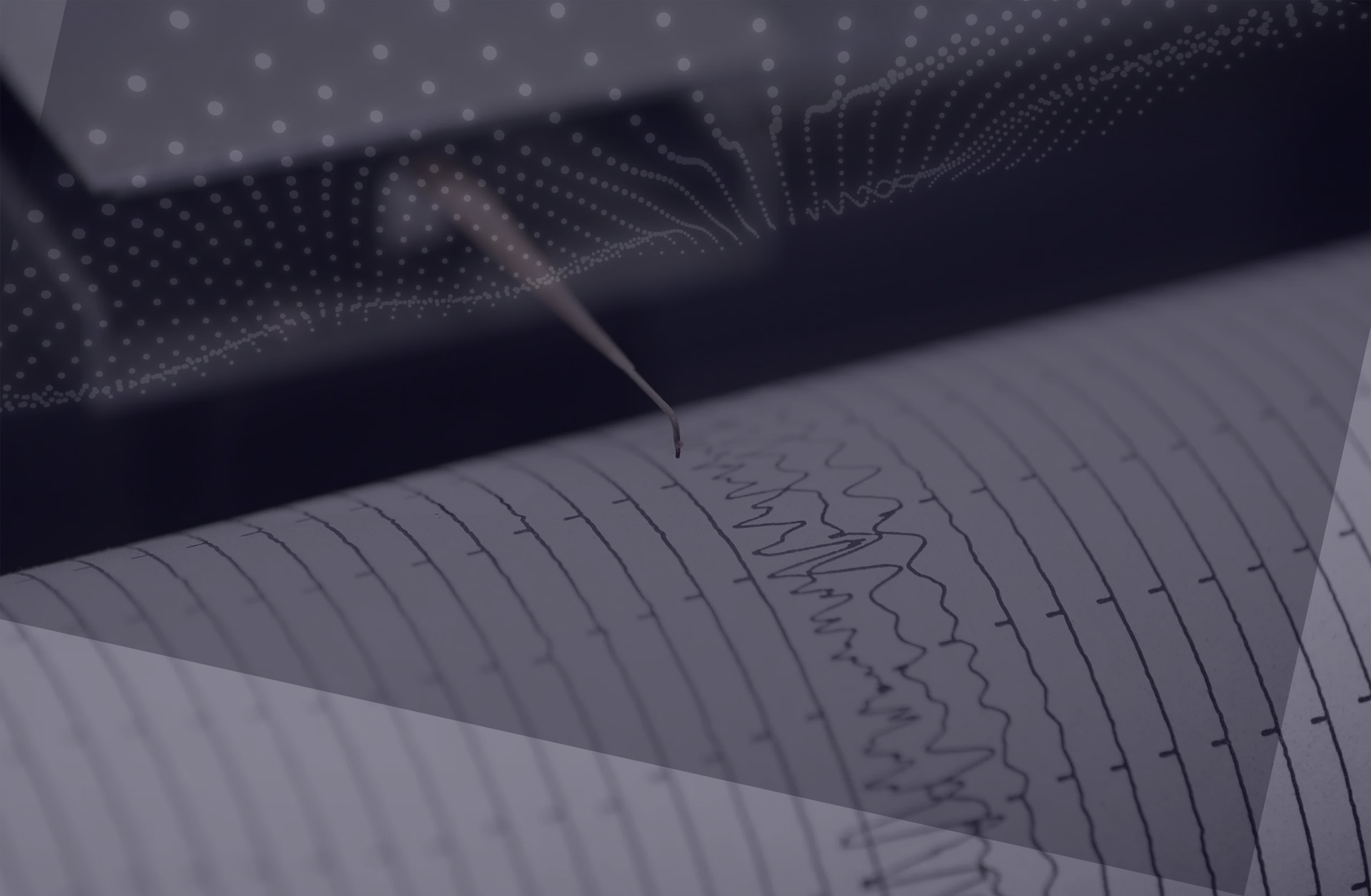In view of the intensification of the bradyseismic phenomenon, Decree-Law No. 140 was issued on 12 October 2023 on “Urgent measures to prevent seismic risk related to the bradyseismic phenomenon in the Campi Flegrei area” Official Gazette No. 239 of 12 October 2023, subsequently converted by Law No. 183 of 7 December 2023.
The measure aims to define preventive and urgent measures to deal with the effects of the evolution of the bradyseismic phenomenon taking place in the Campi Flegrei area.
The Civil Protection Department, with the support of ReLUIS and the other Competence Centers INGV, CNR-IGAG, CNR-IREA, EUCENTRE and PLINIVS-LUPT, has prepared the “Extraordinary Plan for the analysis of the vulnerability of the built areas directly affected by the bradyseismic phenomenon“, aimed at supporting seismic redevelopment strategies of existing buildings and identifying priorities for intervention on private and public building stocks.
As envisaged in Legislative Decree 140, the Plan provides for the following four lines of action:
- a level 3 seismic microzonation study;
- an analysis of the seismic vulnerability of private buildings, aimed at identifying suitable mitigation measures and estimating the related financial needs, and therefore carried out with speed survey methodologies;
- an analysis of the seismic vulnerability of public buildings, carried out with the criteria and methods provided for by the Technical Standards for Construction.
- a program for the implementation of seismic and structural monitoring.
The Plan itself identifies the area of intervention, as shown below, in which the measures provided for in Decree-Law 140/2023 are implemented.

The role of ReLUIS in the Plan implementation
The “Extraordinary Plan for the analysis of the vulnerability of the areas directly affected by the bradyseismic phenomenon”, envisages that ReLUIS provides technical-scientific support, through a special agreement with the DPC, in the activities related to the analysis of the seismic vulnerability of private (b) and public (c) buildings.
As far as private buildings are concerned, the Plan envisages for the ReLUIS Consortium to provide support for the following phases:
(ii) Areal recognition of the most significant building and structural types (CARTIS sheet);
(iv) Detailed survey of the building and structural characteristics (CARTIS-building sheet);
(v) Speedy survey of the curtains of buildings overlooking the main emergency roads as indicated in the Municipal Civil Protection Plans and in the Analysis of the Emergency Limit Condition (CLE);
(vi) Vulnerability assessment, quantification of intervention costs and mitigation plan.
As clarified in the Plan, phases (ii) and (iv) are relevant to reconnaissance activities that make use of the CARTIS and CARTIS-building form, respectively. They were set up and tested in the past by ReLUIS as part of the activities of previous agreements with the Civil Protection Department focused on prevention, starting from 2014. In particular, the CARTIS form is aimed at surveying and describing the prevailing building and structural types of previously identified municipal or sub-municipal areas, called COMPARTMENTS, characterized by homogeneity of the ordinary building fabric due to building age and/or construction techniques. The information contained therein, therefore, refers not to the individual building, but to groups of buildings (types) with similar building and construction characteristics. Knowledge of the building characteristics of the compartments is of great help for the compilation of the CARTIS-building forms, to be carried out in phase (iv) on the individual buildings for which the owner will request an inspection.
The activities planned for phase (v) consist of the execution of a survey campaign aimed at the fast assessment of the solidity of the curtains of the buildings overlooking the main road axes and escape routes identified by the municipal emergency plans and in the analysis of the Emergency Limit Condition (CLE) of the concerned municipalities. It is carried out by means of geometric and thermographic survey techniques mainly by drone and subsequent post-processing of the data aimed at the evaluation of a synthetic vulnerability index of the curtains investigated. As part of the general ReLUIS coordination, the activities of phase (v) are carried out with the technical-scientific coordination of the DICEA of the University of Naples Federico II, by virtue of the experience gained in the research activities carried out in the past, and sees the involvement of the CeSMA Center of the same University for the survey activities carried out with drones.
As far as public buildings are concerned, the Plan envisages that the ReLUIS Consortium support the following phases:
(ii) Implementation of a program of technical seismic safety verifications, complying with the (Italian) Technical Standards for Construction 2018 (NTC 2018), of publicly owned buildings for which such verifications are not already available;
(iii) Implementation of an initial program of interventions on publicly owned buildings for which the technical verifications are already available;
(iv) Implementation of a second program of interventions on publicly owned buildings, at the end of the verification activity of phase (ii)
